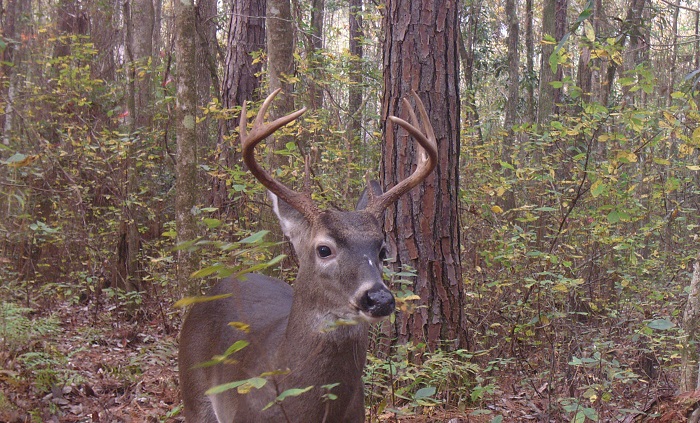
by Mark Mauldin | Apr 9, 2021
Spring can be a busy time of year for those of us who are interested in improving wildlife habitat on the property we own/manage. Spring is when we start many efforts that will pay-off in the fall. If you are a weekend warrior land manager like me there is always more to do than there are available Saturdays to get it done. The following comments are simple reminders about some habitat management activities that should be moving to the top of your to-do list this time of year.
Aquatic Weed Management – If you had problematic weeds in you pond last summer, chances are you will have them again this summer. NOW (spring) is the time to start controlling aquatic weeds. The later into the summer you wait the worse the weeds will get and the more difficult they will be to control. The risk of a fish-kill associated with aquatic weed control also increases as water temperatures and the total biomass of the weeds go up. Springtime is “Just Right” for Using Aquatic Herbicides
Cogongrass Control – Spring is actually the second-best time of year to treat cogongrass, fall (late September until first frost) is the BEST time. That said, ideally cogongrass will be treated with herbicide every six months, making spring and fall important. When treating spring regrowth make sure that there are green leaves at least one foot long before spraying. Spring is also an excellent time of year to identify cogongrass patches – the cottony, white blooms are easy to spot. Identify Cogongrass Now – Look for the Seedheads; Cogongrass – Now is the Best Time to Start Control
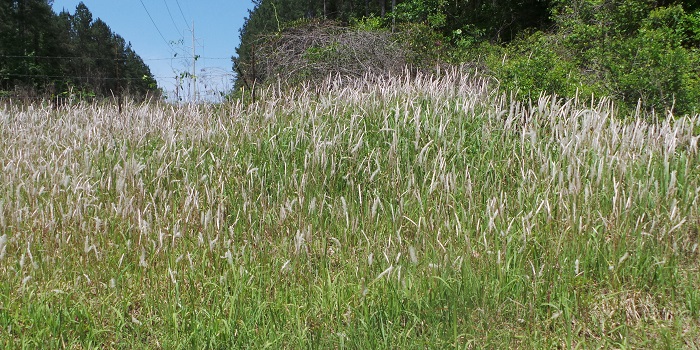
Cogongrass seedheads are easily spotted this time of year.
Photo credit: Mark Mauldin
Warm-Season Food Pots – There is a great deal of variation in when warm season food plots can be planted. Assuming warm-season plots will be panted in the same areas as cool-season plots, the simplest timing strategy is to simply wait for the cool-season plots to play out (a warm, dry May is normally the end of even the best cool-season plot) and then begin preparation for the warm-season plots. This transition period is the best time to deal with soil pH issues (get a soil test) and control weeds. Seed for many varieties of warm-season legumes (which should be the bulk of your plantings) can be somewhat hard to find, so start looking now. If you start early you can find what you want, and not just take whatever the feed store has. Warm Season Food Plots for White-tailed Deer

Deer Feeders – Per FWC regulations deer feeders need to be in continual operation for at least six months prior to hunting over them. Archery season in the Panhandle will start in mid-October, meaning deer feeders need to be up and running by mid-April to be legal to hunt opening morning. If you have plans to move or add feeders to your property, you’d better get to it pretty soon. FWC Feeding Game
Dove Fields – The first phase of dove season will begin in late September. When you look at the “days to maturity” for the various crops in the chart below you might feel like you’ve got plenty of time. While that may be true, don’t forget that not only do you need time for the crop to mature, but also for seeds to begin to drop and birds to find them all before the first phase begins. Because doves are particularly fond of feeding on clean ground, controlling weeds is a worthwhile endeavor. If you are planting on “new ground”, applying a non-selective herbicide several weeks before you begin tillage is an important first step to a clean field, but it adds more time to the process. As mentioned above, it’s always pertinent to start sourcing seed well in advance of your desired planting date. Timing is Crucial for Successful Dove Fields
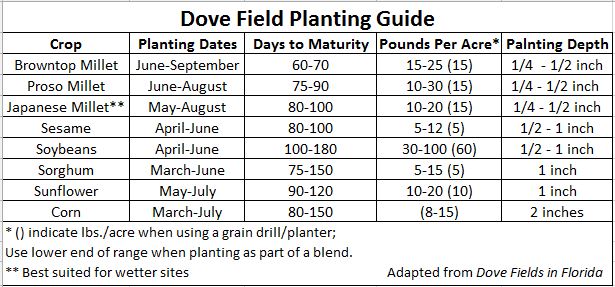
There are many other projects that may be more time sensitive than the ones listed above. These were just a few that have snuck up on me over the years. The links in each section will provide more detailed information on the topics. If you have questions about anything addressed in the article feel free to contact me or your county’s UF/IFAS Extension Natural Resource Agent.
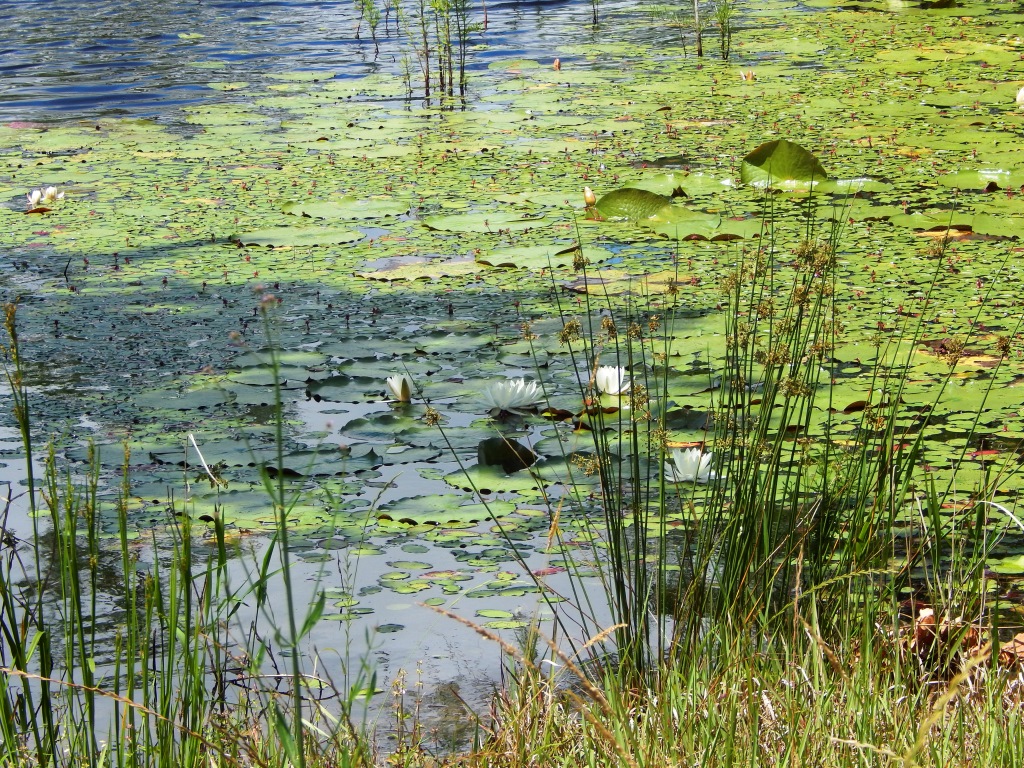
by Mark Mauldin | Apr 9, 2020
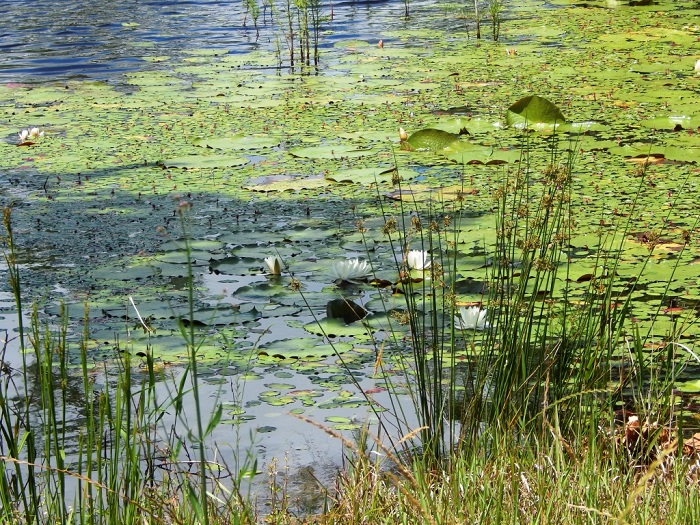
Monitor your ponds closely throughout the spring and make any necessary herbicide applications before weed growth becomes too excessive.
Photo Credit: Mark Mauldin
Even though the calendar says we are only a few weeks into spring, recent weather has been more like summer. The early arrival of sustained warm weather has water temperatures in local ponds high enough that aquatic vegetation growth has really taken off. This early growth period is the ideal time to evaluate ponds and address any aquatic weed issues that may be present, since aquatic weed infestations tend to become worse through the summer. Getting an early start generally helps control efforts to be more successful and less expensive, so get started sooner rather than later.
As plants grow, they are able to build up energy reserves, making them more difficult to control. The longer they are allowed to grow, the stronger and more difficult they are to control. Controlling weeds earlier in the growing season reduces this problem.
Similarly, as the growing season progresses plants produce more and more biomass. If a herbicide is applied and the weeds are killed, large amounts of decomposing plant material in the water can cause problems. The decomposition process uses oxygen; dissolved oxygen in the pond can drop to levels that are hazardous to fish and other aquatic species. The more plant material that is present when herbicides are applied the bigger concern this becomes. Applying herbicides earlier in the growing season, before large amounts of biomass are produced, can help lessen this problem.
Further compounding the issue, warm water is physically able to hold less dissolved oxygen than cooler water. Late in the summer, pond water can be very warm with low concentrations of dissolved oxygen even before large amounts of decomposing plant material are added.
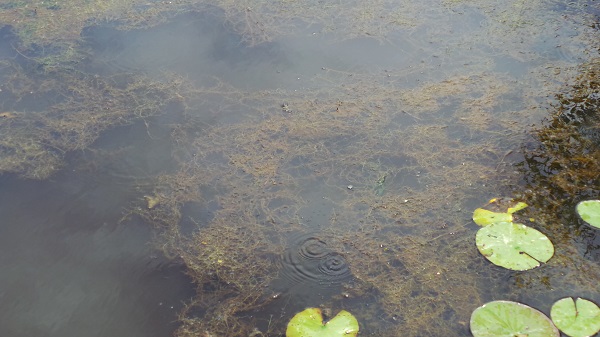
To help reduce the risk of oxygen depletion never treat more than ½ of a pond at one time, if weed growth is already substantial treat no more than 1/3 of a pond at one time and always allow 10 -14 days for oxygen recovery between treatments. Also, avoid treating on cloudy days, another factor that can lead to lowered dissolved oxygen. Photo Credit: Mark Mauldin
Evaluating the vegetation in a pond is always the first step in the management process. Figuring out what kind of weeds you have, and if the population warrants control might seem simple, but it can be somewhat challenging. This is particularly true for submerged weeds – those that grow beneath the surface of the water. Unfortunately, submerged weeds are often the most troublesome weeds for pond owners to deal with. All submerged vegetation is not necessarily a bad thing, but there are several aggressive and/or invasive species of submerged aquatic plants that grow very rapidly and can be quite problematic, making proper evaluation critical.
While emergent and floating plants are easier to evaluate than their submerged counterparts, proper identification of all aquatic plants can help determine their potential for spread and, if warranted, the most effective control measures. If you had problem weeds in your pond last summer, you probably still do; get them identified and under control before they have time to spread. If you did not have problem weeds last summer, be on the lookout for any new/different kinds of weeds to head-off any potential issues.
Due to the current situation with COVID-19, generally speaking, County Extension Agents are not permitted to make field visits, but we are still here to help identify and provide control recommendations for your aquatic weeds. Floating and emergent weeds can generally be effectively identified using pictures. Submerged weeds can be much harder to identify using only pictures. For the best results, special care should be taken when photographing aquatic weeds. Collect a small sample of the weed, place the sample in an opaque container (preferably white in color), cover the sample with clean/clear water just deep enough for the sample to completely spread out and be supported by the water. Take multiple, well focused pictures of the sample. Some pictures should be of the entire sample, while other need to focus on the leaves and the attachment of the leaves to the stem(s). The pictures need to be emailed (not sent via text message) so the image size/quality is not compressed.
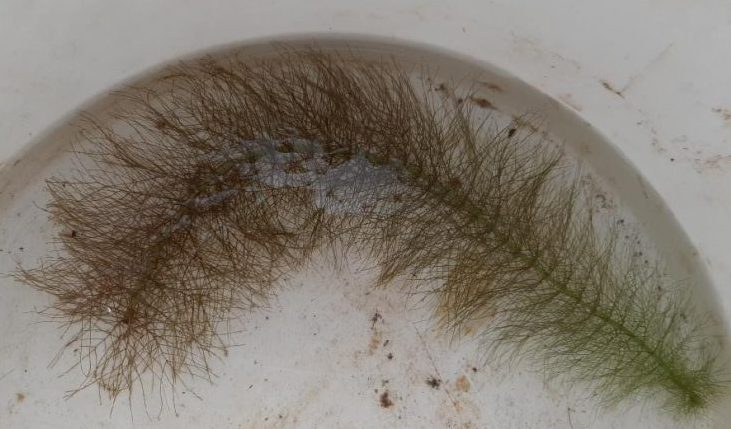
A good image of a submerged weed sample. In addition to this image close-ups of the leaves and attachment points will likely be needed for identification. Photo Credit: Nikki West
Now is the time to start managing aquatic weeds. The current situation in the world will make the process a little different, but with some effort and patience your County Extension Agent can help you get your weeds identified and develop a plan for control. On a positive side-note, most of the commonly recommended herbicides used to control aquatic weeds are available to order online, so it is quite possible you can address your aquatic weed issues all while staying “safer at home“.
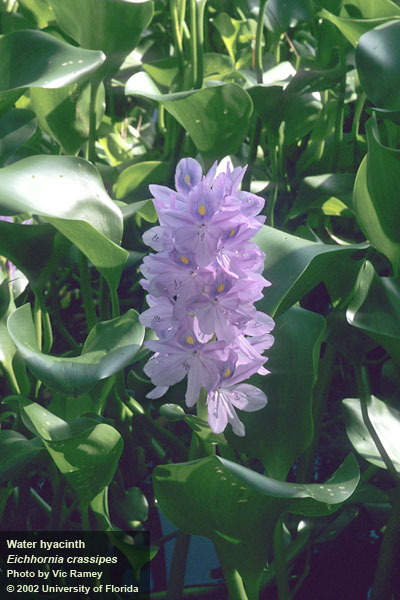
by Libbie Johnson | Feb 24, 2016
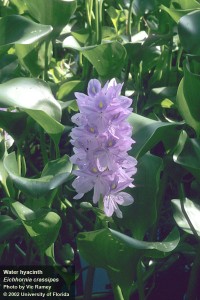 Libbie Johnson
Libbie Johnson
UF IFAS Escambia County Extension
Northwest Florida can be a pond owner’s paradise. There is usually enough rainfall to keep ponds filled, catfish, bass, and brim are well adapted to the environmental conditions, and there is a long season to catch fish.
One of the biggest problems pond owners face is the constant struggle with pond vegetation. Some pond vegetation is good. It provides a cover for young fish, helps stabilize the shoreline or bank, and some vegetative species are attractive wildlife.
However some species are highly invasive and can completely overtake a pond. One such species is water hyacinth (Eichhornia crassipes).
The water hyacinth is a floating plant, which if left unchecked and allowed to grow to its maximum potential, can weigh up to 200 tons per acre of water. In rivers, it can choke out other vegetation and make navigation difficult to impossible.
Water hyacinth, as an ornamental plant, is a wolf in sheep’s clothing. The plants intertwined and form huge floating mats which can root on muddy surfaces, as seen in the photo below.
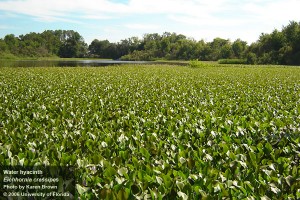
The plant will be several inches tall, has showy lavender flowers, with rounded, shiny, smooth leaves. These leaves are attached to spongy stalks that help keep the plants afloat. The prolific roots are dark and feathery.
In Northwest Florida this pest commonly dies back in the winter. Unfortunately it is able to regrow when the weather and water warm.
Water hyacinth is not a native species. It is believed to have been introduced into the U.S. in 1884 at an exposition in New Orleans. Within 70 years of reaching Florida, the plant covered 126,000 acres of waterways (Schmitz et al. 1993).
Water hyacinth is on the FL DACS Prohibited Aquatic Plant List – 5B-64.011. According to Florida Statute 369.25, “No person shall import, transport, cultivate, collect, sell, or possess any noxious aquatic plant listed on the prohibited aquatic plant list established by the department without a permit issued by the department.”
To control a small infestation, the plants can be gathered from the surface, brought to the shore, left to dry and then disposed of in the garbage. There are biological control options—water hyacinth weevils will be useful in keeping the plant populations down.
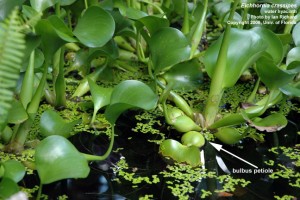
The spongy petiole helps keeps the plant afloat.
Finally, chemical herbicide options may be the best alternative. University of Florida Aquatic Vegetation Specialist, Dr. Langeland, wrote Efficacy of Herbicide Active Ingredients Against Aquatic Weeds, a good publication that will help you to determine which herbicide will work best for different weeds.
NOTE: The middle of the summer is generally not the ideal time for applying herbicide on pond vegetation. For more information on weed control in Florida ponds, please see Weed Control in Florida Ponds. If you have any questions about identifying a pond weed, contact your local county Extension agent.












